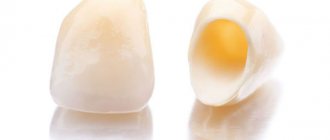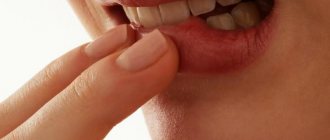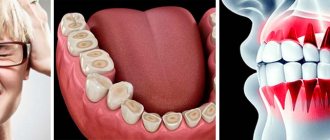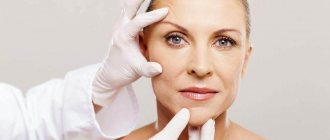If your child appears pale, contact your pediatrician. He will examine the nails, mucous membranes of the mouth and eyes. If they are of normal color, there are no complaints of weakness and lethargy, the child is probably quite healthy. Children often look pale in winter, when they spend little time outside. The impression of pallor is enhanced by dark circles under the eyes - a consequence of allergies, fatigue or other reasons.
THE DOCTOR'S CONSULTATION
Call your doctor if your child is very pale and:
- bruises for no apparent reason or in unusual places
- blood appears in the stool or urine; prolonged bleeding after minor injuries (nasal - more than 10 minutes); menstruation lasts more than 7 days
- gets tired quickly
- You notice other warning signs
ATTENTION!
With moderate anemia, the child usually has almost normal skin color and no noticeable symptoms. With severe anemia, chronic weakness, fatigue, irritability, pallor of the skin, lips and nails appear. However, it is difficult to notice the symptoms because they often develop very slowly.
| ASK YOURSELF A QUESTION | POSSIBLE REASON | WHAT TO DO |
| Is the child pale, but active and healthy? Is he eating and sleeping normally? | Skin color feature, normal | The child has this skin color. He is sensitive to the sun - caution is required in summer |
| Is the child 1.5–2 years old? Does he have fatigue, irritability, pale skin? | Anemia, possibly congenital | A pediatrician's examination is required . He will make a diagnosis and prescribe treatment |
| Does your child have dark circles under their eyes? Does he go to bed late or study a lot? Is the rest of the condition normal? | A consequence of fatigue, allergies or other reasons | If a child is overtired, he should rest more. If your nose is stuffy or there are other signs of allergies, you need to see a pediatrician |
| Has your child recently had a viral infection? Did he take medications, antibiotics, etc.? | Temporary natural decrease in the number of red blood cells after infection | Consult your child's doctor . He will prescribe the necessary tests and give recommendations |
| Does your child have a serious chronic illness? | Anemia due to chronic disease | Contact your pediatrician . He will prescribe the necessary tests and give recommendations |
| Does your child often bruise for no apparent reason or in unusual places? Temperature increase? | Blood disease | Contact your child's doctor (pediatrician) . He will prescribe the necessary tests and recommend treatment |
| Does a preschool child like to put foreign objects or pieces of paint in his mouth? Is he developmentally behind his peers? Do you often experience abdominal pain or vomiting? | Lead poisoning | Contact your pediatrician immediately |
FOR INFORMATION
Treatment of anemia
The most common type of anemia is iron deficiency. It is rarely very difficult. It is more common in children under 3 years of age and in teenage girls, who need to supplement their diet with iron to compensate for its losses due to menstruation. Foods contain two types of iron: iron from animal products (mainly in beef, pork and fish) and iron from plant products (in soybeans, beans, wholemeal bread, dried fruits). During digestion, about 10% of the iron contained in food, mainly of animal origin, is absorbed. The absorption of the second type of iron can be reduced by another half if at the same time we eat foods rich in vitamin C. It is found in citrus fruits and juices, fresh berries, watermelons, red peppers and many other fruits and vegetables. Various types of anemia can be caused by various diseases, medications, or viral infections. If your pediatrician suspects anemia, he will order a blood test to measure hemoglobin (the oxygen-carrying pigment that gives blood its red color) and other tests if necessary. According to the diagnosis, appropriate treatment will be recommended.
general information
From an anatomical point of view, human lips are musculocutaneous folds surrounding the oral cavity. They consist of the orbicularis muscle, skin and mucous membrane. The upper and lower lips are connected to each other by commissures (commissures) at the corners of the mouth.
Lips are constantly exposed to external and internal factors and act as a platform for the manifestation of various diseases. An indicator of pathological changes in the body is, in particular, a symptom that is simply called “white lips”.
Vinikli nutrition - consult a doctor
To make an appointment for a consultation, call or fill out the return form:
(050) 301-99-26 (067) 446-11-79
Damn,
Your request has been successfully sent!
A call center specialist will contact you as soon as possible to clarify all the details.
In normal condition, the lips stretch without pain, have a pink or light red color, and a smooth surface. White lips in a child or adult are a leading sign of various diseases, to which dryness, swelling, soreness, and cracking may be added.
Lips are an important detail that affects the aesthetic perception of the face and performs many other functions. The lips are involved in the formation of facial expressions; they contain receptors responsible for different types of sensitivity. In addition, they serve as an indicator of a person's health status.
When a pathological process occurs in the body, the lips can change their size, become less elastic, lose sensitivity, become covered in rashes, and turn white. Consulting a dermatologist will help eliminate these manifestations or prevent them.
Main signs of cheilitis
All manifestations of the inflammatory process have varying degrees of severity, but the following symptoms are mainly noted:
- dry skin around the mouth,
- cracking, appearance of small wounds,
- bleeding at the site of damage to the integrity of the epithelium,
- redness and swelling of the red border,
- loss of elasticity of the epithelium, appearance of a keratinized layer,
- pain in the area of inflammation,
- the occurrence of painful sensations caused by mechanical irritation of erosive areas during chewing food,
- change in color of the affected areas of the mucous membrane.
Cracks and wounds indicate a problem.
If even one of the symptoms described above appears, it would be a good idea to see a doctor. The sooner a pathological condition can be recognized, the faster it can be eliminated.
Why are lips white
Human lips, their surface, mucous membrane, and surrounding skin very often display pathological changes that fall within the scope of consideration of several areas of medicine. As a rule, these are deviations that require dermatological, dental, therapeutic care, and the attention of infectious disease doctors.
Only a qualified specialist will be able to determine whether, in your case, white lips are an external sign of illness or a temporary cosmetic problem.
The main reasons why a person’s lips turn white are as follows.
- Manifestation of anemia. The lips and their mucous membranes lose their natural color and turn white due to a decrease in hemoglobin content in the blood. Such changes are observed mainly in iron deficiency or anemia caused by a lack of vitamin B12. The change in color is often accompanied by a deterioration in general health, headaches, burning and painful sensations in the lips, and their dryness.
- Oral candidiasis. More common in young children. It develops when infected with yeast-like fungi of the genus Candida. First, white dotted spots appear on the lips, later they merge and form a continuous film.
- Leukoplakia. A chronic disease accompanied by increased keratinization of the epithelium and inflammation of the mucous membrane. The color of the lesions on the lips can vary, including whitish or white-gray.
- Smoking. Under the influence of nicotine, foci of whitish hyperkeratosis may appear.
- The influence of meteorological conditions (dry air, wind, low temperatures). In such situations, a short-term change in color is observed, followed by restoration of normal tone when the provoking factor is eliminated.
If the natural color of the lips is not restored within several days, they are sore, there are rashes on the surface, or a deterioration in the general condition, you need to consult a doctor - a therapist or a dermatologist. He will study your complaints, conduct anamnestic information collection and a physical examination. If there is a suspicion of a systemic or infectious disease, he will refer a specialist of the appropriate profile for consultation.
What is "cheilitis"
The name of the problem comes from the Greek word “choilos”, which translates as “lip”, so inflammation that affects the mucous layer, the red border and the adjacent skin is called cheilitis. In exceptional cases, unpleasant symptoms can affect not only the upper or lower lip, but also the oral cavity, surrounding areas of the epithelium, as well as the membranes lining them from the inside. Cheilitis is characterized by a long course and is often combined with stomatitis or dyskeratosis (abnormal thickening and roughening of the skin near the mouth).
Why does inflammation appear on the lips?
There are many varieties of cheilitis, which differ in their manifestations and are provoked by different reasons. Let's take a closer look at these factors.
White lips in adults and children: diagnosis and treatment
In cases where anamnesis and visual examination of the affected areas of the lips are not enough to make an accurate diagnosis, laboratory and instrumental studies are prescribed. Usually this:
- clinical blood and urine analysis;
- blood chemistry;
- microscopy of lip plaque, histological examination of the selected material;
- Ultrasound, CT, MRI - if necessary, assess the condition of internal organs.
After the diagnosis is made, measures are taken to eliminate the causes of the disease. For some, the doctor will recommend getting rid of bad habits, preventing the adverse effects of the environment, and reviewing their diet in order to saturate it with vitamins and microelements. Others will need drug therapy with systemic and local medications. The choice of medications is carried out taking into account the characteristics of pathological changes in the lips and the nature of the body diseases identified during diagnosis.
Pediatricians:
Avzalova Daria Evgenevna
Pediatrician, neonatologist
Experience: 18 years Reviews: 7
Call to home
Barzenok Tatyana Arsenyevna
Head of the pediatric department, pediatrician of the first category
Experience: 28 years Reviews: 17
Make an appointment Call at home
Belousova Elena Sergeevna
Pediatrician, nephrologist
Experience: 18 years Reviews: 14
Make an appointment Call at home
Bykov Mikhail Viktorovich
Pediatrician of the highest category, ultrasound diagnostics specialist, Candidate of Medical Sciences
Experience: 25 years Reviews: 3
Make an appointment Call at home
Kazakova Liliya Valentinovna
Pediatrician, neonatologist, head of the breastfeeding consultant service
Experience: 28 years Reviews: 31
Make an appointment Call at home
Sedova Maria Sergeevna
Pediatrician, allergist-immunologist
Experience: 20 years Reviews: 30
Make an appointment Call at home
Sergienko Tatyana Yakovlevna
Pediatrician, pediatrician on duty at the pediatric hotline
Experience: 39 years Reviews: 21
Make an appointment
Prevention of the disease
The following preventive measures will help to avoid the problem and prevent its progression:
- frequent, regular moisturizing of lips with hypoallergenic products containing natural ingredients,
- correct diet - excluding unhealthy foods from the menu, switching to a dairy-vegetable diet,
- avoiding contact with allergens,
- oral hygiene and timely visits to the dentist,
- taking multivitamins,
- regular exercises to strengthen the muscles of the cheeks and lips,
- giving up addictions (drinking alcohol and tobacco products).
Hypoallergenic hygiene products are perfect for prevention.
The main condition for a speedy recovery is a timely visit to doctors and implementation of therapy under their supervision. There is no need to take risks and self-medicate or use some folk method without additional medications, since the problem can become dangerous and the recovery process will drag on for a long period.
Possible complications of the disease
Many people perceive the disease as a cold, and then do not pay due attention to symptomatic treatment. No one thinks about how to cure it, and in the meantime, without timely treatment, the problem develops into severe stages. The most dangerous complications are:
- development of malignant processes,
- the appearance of superinfections - the attachment of other strains of viruses to the affected cells.
Complicated forms of pathology can make it difficult to eat and even worsen the general condition of the body (provoke dizziness and weakness). Speech defects also occur, because crusts impede lip mobility. And pronounced aesthetic defects on the face often become the cause of psychological problems.
Contour plastic with fillers
The procedure involves injecting special medications into the lips through a thin needle. The injection technique may vary, and the choice of method depends on the type of filler and the desired result, which are determined individually.
Drugs that allow you to correct the contour and volume of the lips without surgery are called fillers. These are fillers that change the shape of soft tissues and complement the missing, lost volumes. Most often, fillers are used based on hyaluronic acid, which is a natural component. The substance does not cause allergies or side effects, is well distributed in tissues and is absorbed in the body over time.
Corrective drugs must be certified. Most often in aesthetic medicine clinics and beauty salons they use Juvederm, Surgiderm, Belotero, Perlane, Restylane. In addition to preparations with hyaluronic acid, fillers based on collagen, calcium hydroxyapatite, polylactic acid and many other substances are also used.
The procedure takes place in several stages:
- Anesthesia. The injections do not cause too much discomfort, but for patients with increased sensitivity, injection or surface anesthesia is used.
- Introduction of filler. Key stage of the procedure. The gel is injected through a thin needle, which evenly distributes the drug at a depth of about 2-4 mm.
- Massage. To avoid the formation of lumps, the specialist performs a light massage.
You can go home immediately after the procedure. The recovery period takes up to 5 days. During this time, the swelling goes down and the bruises disappear. In some cases, the specialist prescribes healing ointments or cold compresses.
Before you make your lip contour clearer with fillers, it is important to consider that the effect of the procedure is quite short-term. On average, the result lasts about 6 months, only in rare cases it lasts up to one and a half years. After 6-9 months, the procedure must be repeated. However, injections should not be given too often, as scars may appear as a result of the needle injuring the delicate skin.
Traditional medicine
To speed up the healing process, therapy with well-proven folk remedies is allowed. So, at home, anti-inflammatory, wound-healing decoctions and infusions are often used:
- aloe juice - peeled lower leaves of the plant are crushed, and the liquid from them is mixed with boiled vegetable oil in a ratio of 1:3. The resulting thick mixture is used to treat the affected areas at least 3-4 times a day,
Aloe juice is good for treatment - boiled sage or calendula - 2-3 tbsp. l. dry plants, pour 500 ml of water and boil for about 10 minutes. The mixture is filtered and applied to the affected areas every 30 minutes,
- oak bark - 40 g of crushed bark is poured into 200 ml of chilled water and kept for 30 minutes over low heat. The lips are lubricated every few hours with cooled and strained liquid.
“I once had meteorological cheilitis. I got rid of it very easily and quickly by regularly lubricating my lips with regular vegetable oil. It moisturizes the skin well and relieves the feeling of tightness.”
Yana S., 34 years old, Volgograd
The use of any traditional medicine recipes must be agreed upon with the attending physician. Otherwise, self-treatment can only aggravate the situation and lead to undesirable consequences.
General treatment recommendations
After determining the exact form of the disease, the doctor must assess its severity and how to cure it. If the problem is not severe and protracted, then it is effective to apply local correction of the endocrine glands using physiotherapy. The following activities are most often prescribed:
- laser therapy,
- ultrasound therapy,
- UV radiation,
- electrophoresis,
- blood transfusion.
In some cases, laser therapy is prescribed.
It is worth noting that in difficult cases, more radical treatment options are prescribed - electrocoagulation, laser ablation, surgical enucleation.









